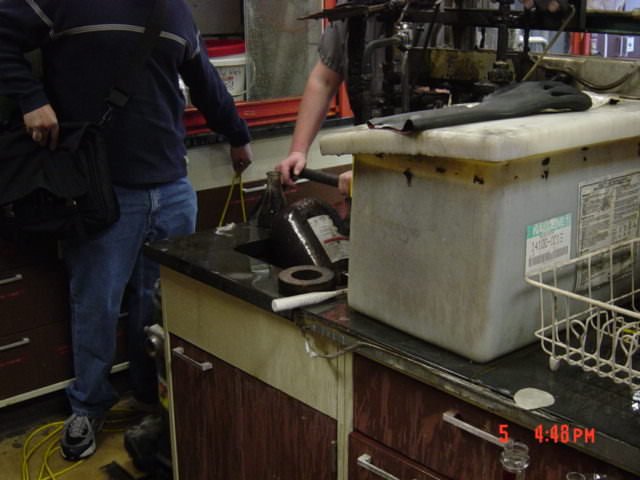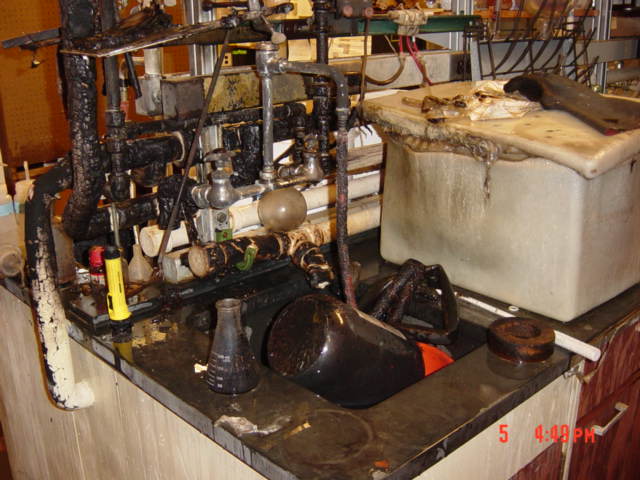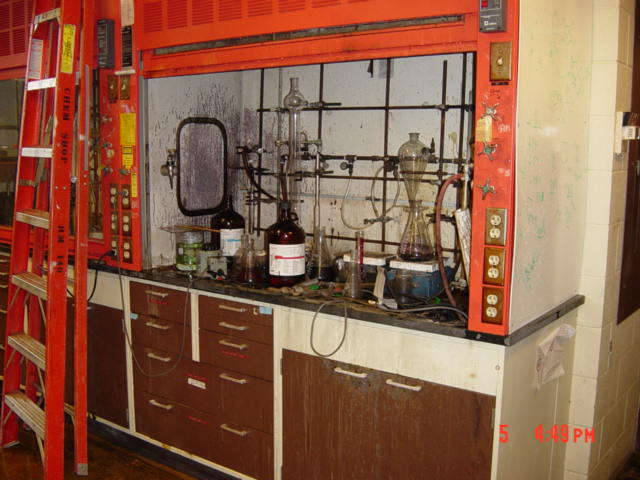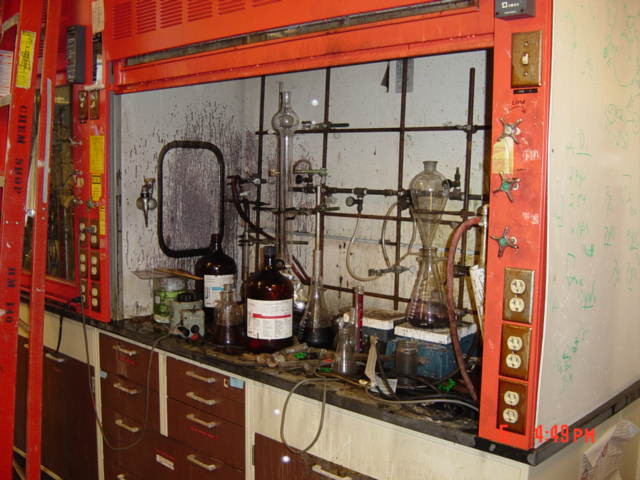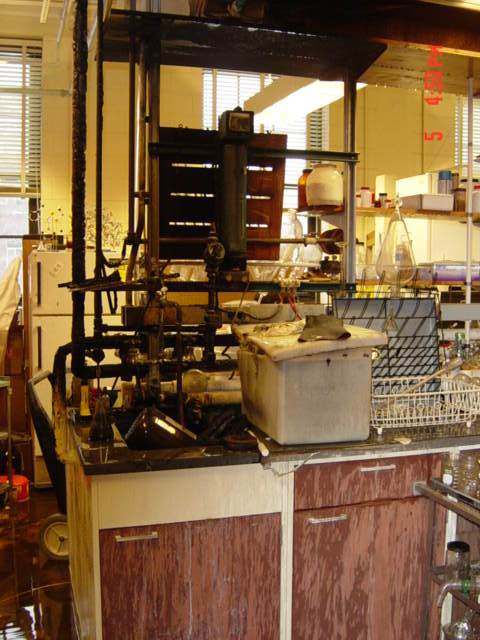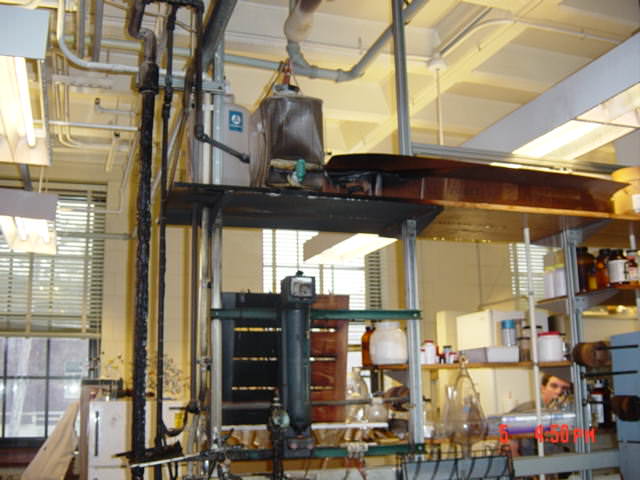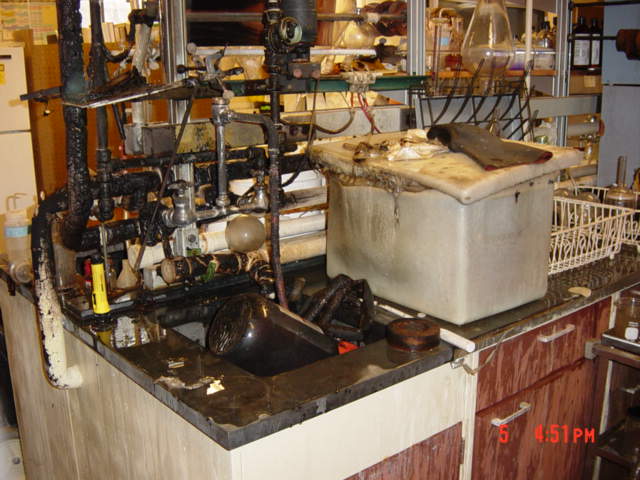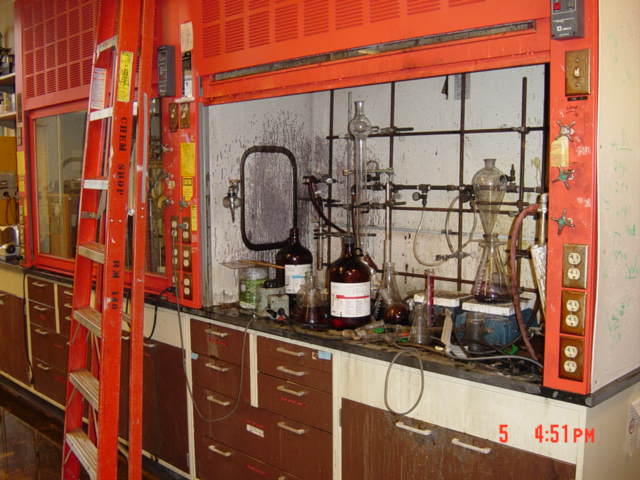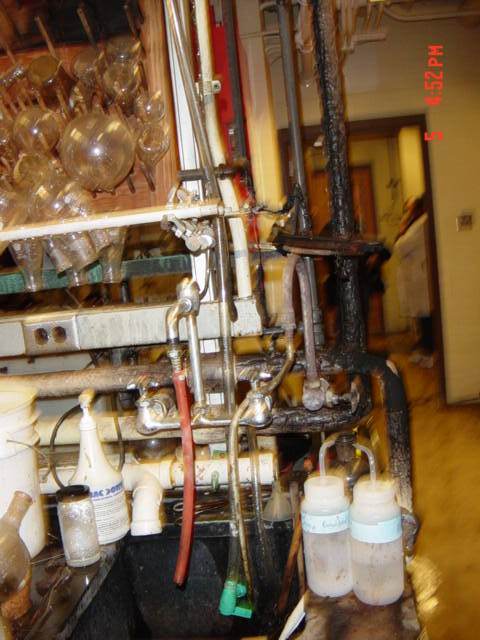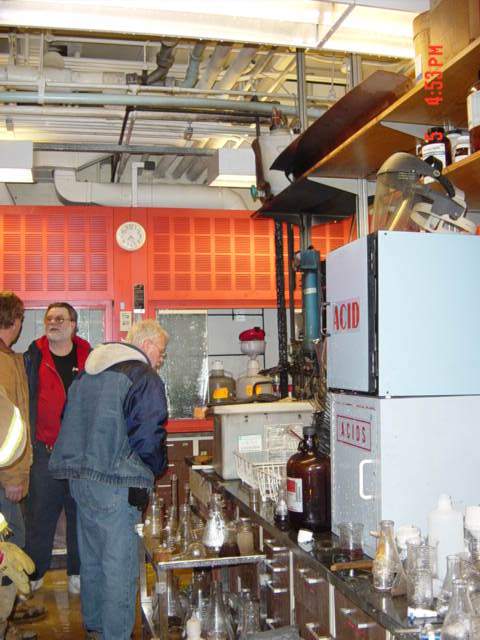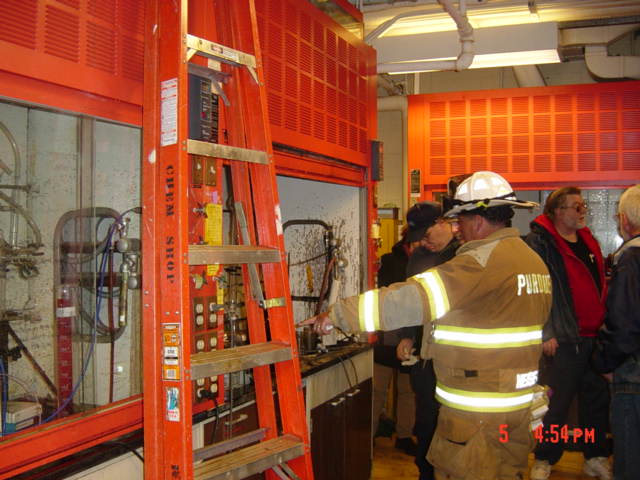WTHR Fire Feb 2004
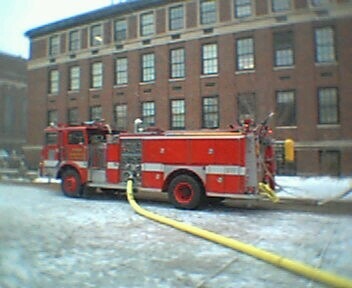
Thanks to the student who took this photo with his new cell phone as we waited and watched at the west side of the building.
Fire suppression sprinklers and excellent response time by the Purdue Fire Department prevented this fire from becoming a large loss of property and possibly human life or health. No one was injured, and the property damage was minimal.
See below for explanation.
As we all stood outside and watched, a student innocently and honestly curious asked me "will they do anything to the people who caused this?" I said "Well, if you mean punish them, well, it will probably feel like punishment, but depending on what happened we usually just try very hard to understand exactly what happened, where things went wrong, and how to prevent things like this from happening.
2/9/04 Professor to student: Before you leave town [please write] a Word writeup about the lab accident. The focus is on:
- getting as many details as possible,
- describe the "root" cause(s) even if you regret doing something.
....This is not to embarrass or punish anyone, including me. She wants you to be as blunt and complete as possible even if it includes admitting mistakes. Include the date, time, materials involved, quantities, and chronology of events. Name the people who helped out-rang the alarm, used extinguishers,
Student report
On Thursday, Feb.5th at approximately 4:00 P.M. I was performing a recrystallization. The process involved warming some acetone (<5ml) in an Erlenmeyer flask on a hot plate. After checking as to whether the acetone was warm to touch I added some pet. ether to the flask. All of a sudden I saw and heard the Erlenmeyer flask blow with smoke, but I don't recall seeing any fire until the 4 liter bottle of pet. ether in my hood and my hood floor became inflamed. The pet. ether bottle was sitting in the corner of my hood near the vacuum line.
There were several other organic preps in my hood that were sitting in chloroform and dichloromethane solvents. At the time I thought there was a great possibility that my hood would explode due to all of the organic solvents so I move the 4 liter bottle of flaming pet. ether to the sink and called for a fire extinguisher. The first extinguisher (Alex Shelton) didn't help nor did the second fire extinguisher (Mike Wilson). The fire become more aggressive and the sprinkler system activated. In the process of trying to put out the fire the undergraduate (Becky) in the lab ran to pull the fire alarm. We could not contain the fire so as we were getting ready to evacuate the immediate lab Dr. Rothwell entered the lab and told tell us to leave the building. So we closed the door to the lab and left the building.
What went wrong, what has been learned:
- A hood is NEVER to contain ANY unnecessary flammable liquids or items that would burn easily if any of the work taking place in it is capable of causing a fire.
- The first thing you do is call 911 or pull the fire alarm if it's closer than the phone.
- Never take a burning object out of a hood. Close the hood, call 911, leave the room.
This fire came way to close to getting out of control. We were very lucky.
There are a number of academic departments and entire institutions which have decided against having fire extinguishers in the labs, because of this kind of mistake can take lives and burn down whole buildings.
In our own Electrical and Computer Engineering Department, for example, nobody except firefighters and three annually trained professional staff members are allowed to use the extinguishers. Graduate students or postdocs who break this rule are given a "time out" (kicked out of the lab) for a couple of weeks.
Trying to put out a fire is not inherently wrong, but the procedure in this case -- taking the container out of the hood and failing to call 911 immediately -- showed a horrible failure of training.
